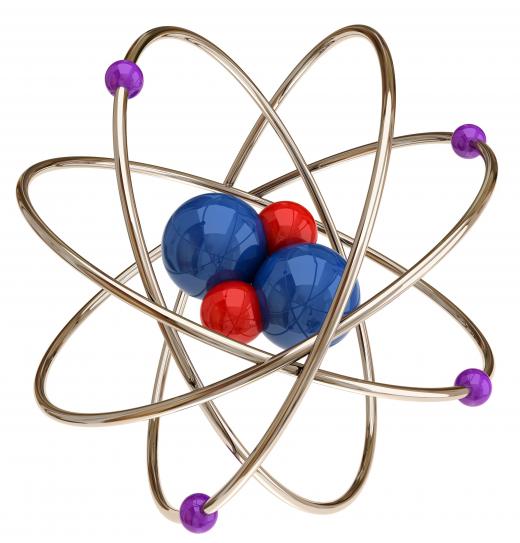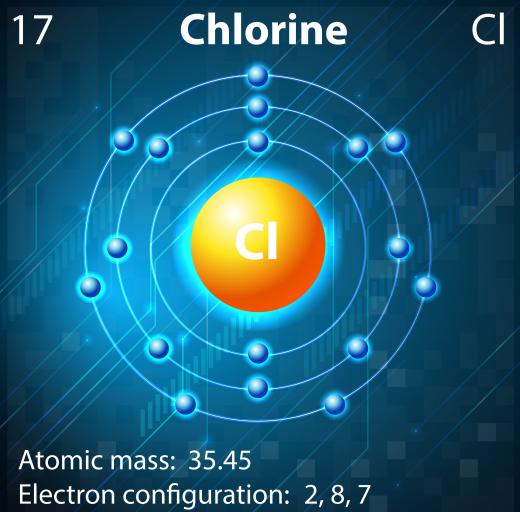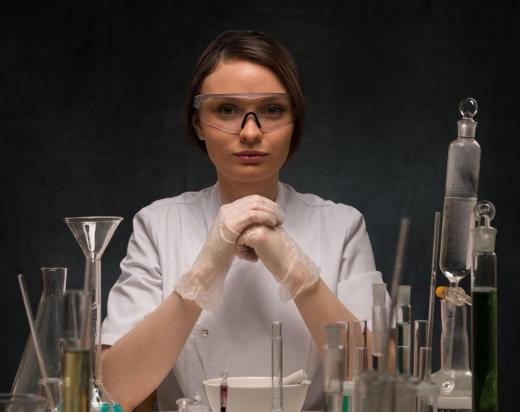What are Anions?
Ions consist of either atoms or groups of atoms that have a charge that is either negative or positive. If they have have gained electrons, they will be negatively charged, due to having more electrons than protons, and are called anions. These ions are usually composed from more than one atom, making them polyatomic ions, and they are usually built around a core atom, typically a non-metal.
Common anions include acetate, hydroxide, carbonate, chlorate, cyanide, fluoride, nitrate, phosphate, and oxide. Except for hydroxide and cyanide, all that end in –ide are monatomic. Group 7 atoms called halides, which include such elements as fluorine, chlorine, bromine and iodine, form anions with a charge of negative one. Elements such as oxygen and sulfur carry a charge of negative two, while nitrogen and phosphorus carry a negative three charge.

Most polyatomic ions combine with oxygen and/or hydrogen to make an anion. In these ions, the negative charge, or electron, is shared around the entire ion, not within a specific nucleus in the ion. They are also known as negative ions, while positive ions are called cations. Cations are atoms that have lost an electron, and as a result, they have a positive charge. Both are often found in water because of the nature of the molecule.

An anion’s physical properties differ from those of a cation. It polarizes the electron clouds of molecules in the opposite way that cations do. Also, these ions have weakly bound electron densities, which leads to a great likelihood of polarization, or the resistance of an electrolytic cell. They have stronger interactions with nearby molecules than neutrals and cations, which are less likely to polarize.

Electron-binding energy in an anion is less than in a neutral or cation. A negative ion does not typically experience an excited electronic state. Furthermore, its electrons will move to regions of space occupied by orbitals to experience an attractive potential different from that experienced by neutrals and cations.
Anions tend to bind outer electrons more tightly than neutrals and cations, which leads to difficulty in creating a massive amount of them. Electronically or geometrically stable ones, or those that will neither detach nor fragment, will usually bind excess electrons in their orbitals. This allows for easy analysis, and chemists can determine more about them through either experiment or calculation.
AS FEATURED ON:
AS FEATURED ON:














Discussion Comments
@ Submariner- cations vs anions seems to always give people fits, but if you think about them relative to how they are grouped on the periodic table of elements it is much easier to figure out which are which. Common cations form in the first two groups of the periodic table of elements. Group one elements will often give away one electron to forma plus one cation. The exception is hydrogen, which will both give away an electron or gain an electron. This is because hydrogen has only one to begin with so it will give away an electron to have none, or gain an electron to make a complete electron shell with two electrons.
Group two elements have two electrons that they are willing to give away, so they will form a positive two charge. Aluminum also forms a cation with a positive three charge.
@ Babalaas- What is the difference between cations and anions? I don't really know much about chemistry, but I am going to take a chemistry course with lab next semester and I want to familiarize myself with some of the terms. I like to be prepared and not walk into a classroom without knowing anything about the subject I am trying to learn.
All anions have negative charges, regardless of whether they are monatomic or polyatomic anions. An anion is simply an atom or group of atoms that pick up an extra electron, giving them a negative charge. The reason for the negative charge is that the number of positively charged protons in an atom never changes, so add an electron or two and you have more negatively charged particles than positively charged particles in the atom.
The reason an atom would want to pick up an extra electron is to fill their outermost electron shells. Elements in group 7A have only seven electrons in their outermost shell, so they are willing to pick up an extra electron to create an outermost shell with eight electrons (a complete shell).
Post your comments